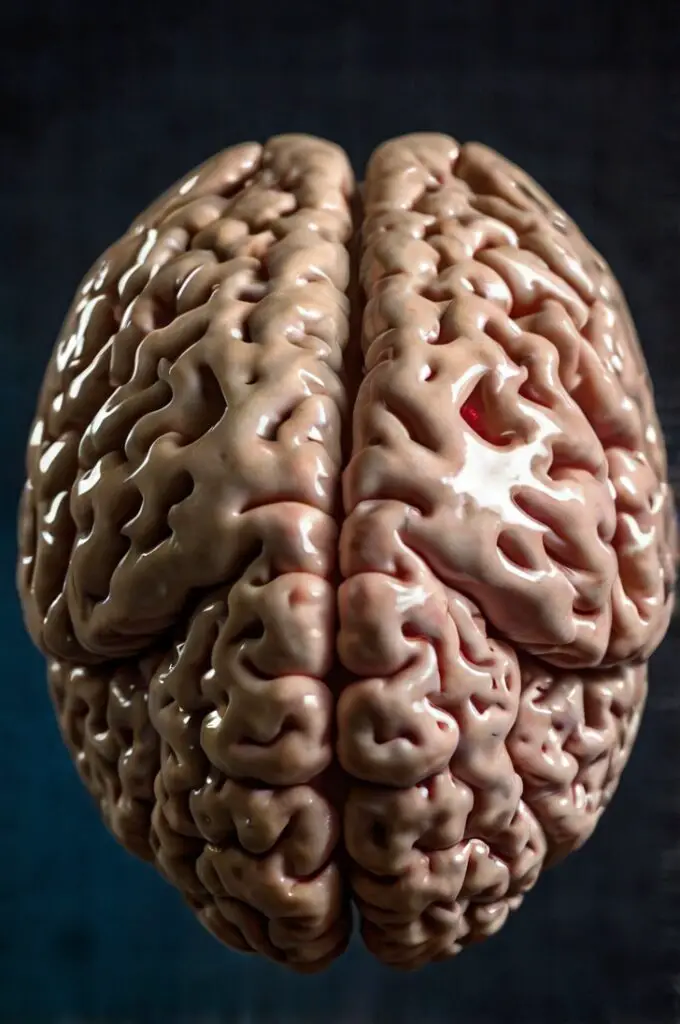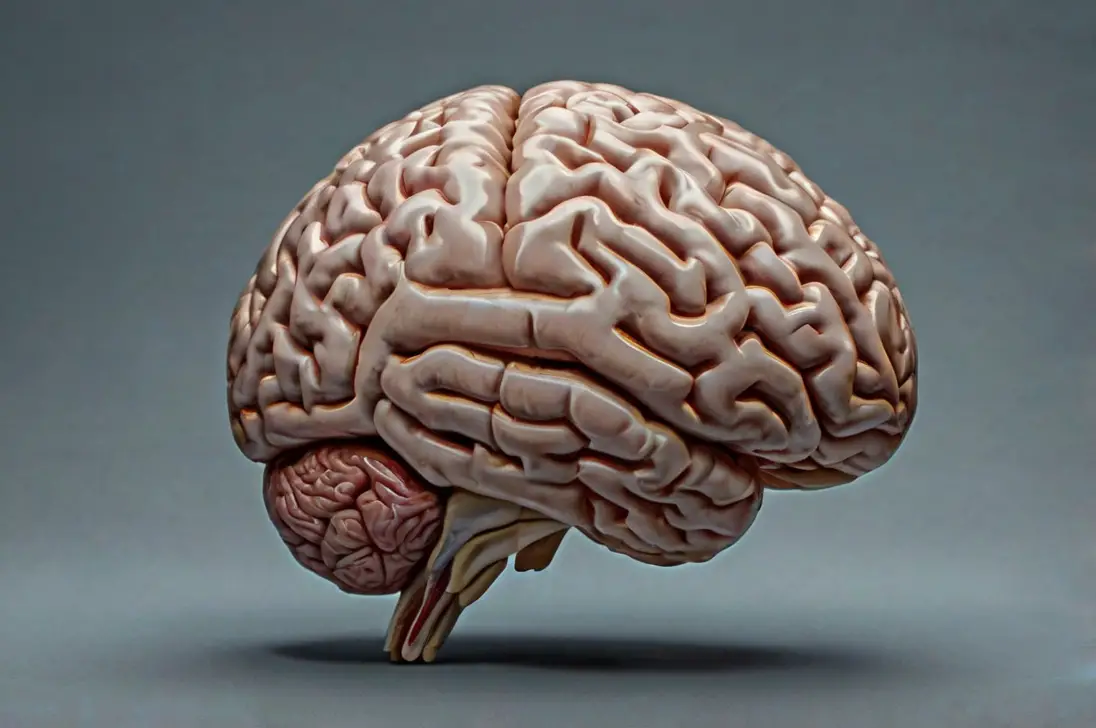
Anoxic brain damage is a serious condition that can have life-altering consequences.
It occurs when the brain is deprived of oxygen for an extended period, leading to the death of brain cells and potentially severe neurological impairments.
In this article, we will explore what anoxic brain damage is, its causes, symptoms, and the impact it can have on daily life.
We’ll also discuss diagnosis, treatment options, and strategies for prevention.
What is Anoxic Brain Damage?
Anoxic brain damage occurs when the brain is completely deprived of oxygen, causing brain cells to die.
Unlike hypoxic brain injury, where the brain receives a reduced level of oxygen, anoxic brain damage involves a total lack of oxygen.
The brain requires a continuous supply of oxygen to function properly, and even a few minutes without it can lead to irreversible damage.
The severity of the damage depends on how long the brain was without oxygen and which areas were affected.
Types of Anoxic Brain Damage

There are several types of anoxic brain damage, classified based on the cause of oxygen deprivation:
Anoxic anoxia
This type of brain damage occurs when there is no oxygen available for the brain to use.
This can happen in situations like suffocation, drowning, or even being in an environment where there’s no oxygen, like at high altitudes without proper equipment.
Anemic anoxia
This occurs when there isn’t enough hemoglobin in the blood to carry oxygen to the brain.
Hemoglobin is a protein in red blood cells responsible for transporting oxygen throughout the body.
If your dog (or a person) loses a lot of blood, like in severe trauma, or is exposed to something that disrupts hemoglobin function, such as carbon monoxide poisoning, the brain doesn’t get the oxygen it needs.
Toxic anoxia
In this type, the brain can’t use the oxygen available because of exposure to certain toxins or poisons.
For example, carbon monoxide or cyanide can prevent the brain from using oxygen effectively, even if there’s plenty of oxygen available to breathe.
These poisons interfere with how cells in the brain absorb and use oxygen, leading to brain damage.
Stagnant anoxia
Also known as hypoxic-ischemic encephalopathy, this type of brain damage occurs when blood flow to the brain is reduced or completely stopped.
Without adequate blood flow, the brain doesn’t get enough oxygen.
This can happen during a cardiac arrest (when the heart stops beating) or a stroke (when blood vessels in the brain are blocked or burst).
Causes of Anoxic Brain Damage
Anoxic brain damage can result from various events that disrupt the flow of oxygen to the brain.
Some common causes include:
- Cardiac arrest: One of the leading causes, where the heart stops pumping blood, cutting off oxygen to the brain.
- Drowning: Submersion in water can lead to suffocation and oxygen deprivation.
- Choking: Obstruction of the airway prevents oxygen from reaching the lungs and brain.
- Suffocation: Lack of oxygen due to external pressure on the airway or environmental factors like being trapped in a confined space.
- Severe asthma attack: Can block the airways, preventing oxygen from reaching the brain.
- Carbon monoxide poisoning: A silent killer that prevents oxygen from binding to hemoglobin, leading to brain damage.
- Strangulation: External pressure on the neck can cut off oxygen supply to the brain.

Symptoms of Anoxic Brain Damage
The symptoms of anoxic brain damage can vary widely depending on the severity and duration of oxygen deprivation.
Some common symptoms include:
Immediate Symptoms
- Loss of consciousness
- Confusion
- Seizures
- Muscle weakness
- Respiratory distress
Long-term Symptoms
- Memory loss
- Cognitive impairment
- Emotional changes
- Motor function deficits
- Speech difficulties
The Impact of Anoxic Brain Damage on Daily Life
These effects can vary greatly depending on how severe the damage is and which parts of the brain are affected.
Here’s a closer look at how anoxic brain damage can impact various aspects of life:
Physical challenges
- Mobility issues: Depending on the severity of the brain damage, a person might experience weakness, difficulty walking, or even paralysis.
- Sensory impairments: Some people might experience changes in vision, hearing, or the ability to feel sensations like touch, temperature, or pain.
- Communication difficulties: The brain areas responsible for speech and language can be affected, leading to challenges in communicating.
Cognitive challenges
- Memory loss: This might involve difficulty remembering recent events, recognizing familiar people or places, or recalling information that was once easily accessible.
- Difficulty concentrating: The ability to focus and concentrate might be reduced. This can make it hard to follow conversations, complete tasks, or stay engaged in activities.
- Executive function impairments: Executive functions are higher-level cognitive skills that help with planning, decision-making, and problem-solving.
Emotional and psychological impact
- Anxiety and depression: Many people experience anxiety or depression as they struggle to cope with the changes in their abilities and the challenges of daily life.
- Social isolation: Communication difficulties, mobility issues, and emotional challenges can lead to social isolation.
- Coping mechanisms: Rehabilitation therapies, such as physical, occupational, and speech therapy, can help improve abilities and teach new ways to manage daily tasks.

Diagnosis and Assessment
Diagnosing anoxic brain damage involves a combination of medical history, physical examination, and diagnostic tests.
Common methods include:
Imaging tests
- MRI (Magnetic Resonance Imaging): An MRI is a powerful imaging tool that uses magnets and radio waves to create detailed images of the brain.
- CT Scan (Computed Tomography): A CT scan is another imaging test that uses X-rays to create cross-sectional images of the brain.
Electroencephalogram (EEG)
An EEG measures the electrical activity in the brain.
Small electrodes are placed on the scalp, and they detect and record brain wave patterns.
If there’s anoxic brain damage, the EEG might show abnormal patterns, such as slow brain waves or spikes of unusual activity.
Neurological exams
Neurological exams are a series of tests that assess both cognitive (thinking) and physical functions.
For cognitive tests, doctors might ask the patient to recall information, solve simple problems, or follow instructions to see how well their memory, concentration, and problem-solving skills are working.
For physical assessments, they might check reflexes, muscle strength, and coordination to see how well the brain is communicating with the body.
Blood tests
Blood tests can provide important information about the cause of the oxygen deprivation.
For example, if carbon monoxide poisoning is suspected, blood tests can measure the levels of carbon monoxide in the blood.
Blood tests can also detect other toxins, check for signs of infection, or measure levels of oxygen and carbon dioxide in the blood.

Treatment and Management
Treatment for anoxic brain damage focuses on stabilizing the patient, preventing further damage, and managing symptoms.
Key approaches include:
Immediate resuscitation
When someone experiences severe oxygen deprivation, such as from cardiac arrest or drowning, immediate resuscitation is essential.
This involves actions like performing CPR (cardiopulmonary resuscitation) to restore blood flow and oxygen to the brain.
The quicker these actions are taken, the better the chances of minimizing brain damage.
Hyperbaric Oxygen Therapy (HBOT)
Hyperbaric Oxygen Therapy involves placing the patient in a special chamber where they breathe pure oxygen at higher-than-normal atmospheric pressures.
This treatment helps increase the amount of oxygen in the blood and tissues, which can aid in healing damaged brain cells and reduce swelling.
Rehabilitation
- Physical therapy: This therapy focuses on helping patients regain motor skills and improve their physical abilities.
- Occupational therapy: This might involve learning how to use assistive devices or developing new routines to manage activities like dressing, cooking, or using the bathroom.
- Speech therapy: Therapists work with patients on finding words, forming sentences, and improving their ability to understand and be understood in conversations.
Medications
Various medications may be prescribed to manage symptoms associated with anoxic brain damage.
These can include:
- Anticonvulsants: To control seizures if the brain damage has led to seizure activity.
- Pain relievers: To address any pain or discomfort resulting from the injury.
- Mood stabilizers: To help manage mood disorders, such as depression or anxiety, which can occur as a result of brain damage.
Supportive care
In severe cases, where the brain damage is extensive and recovery is limited, long-term supportive care may be required.
This can involve specialized facilities where patients receive ongoing medical care, therapy, and assistance with daily living activities.
These facilities provide a structured environment with professional staff trained to support individuals with significant brain injuries.

Recovery Timeline
The recovery timeline for anoxic brain damage varies greatly depending on the severity of the injury and the individual’s response to treatment.
Early stages (0-2 months)
- Initial unconsciousness and potential coma or vegetative state.
- Gradual improvement as swelling decreases and brain function returns.
Intermediate stages (2-6 months)
- Increased awareness and responsiveness.
- Initial stages of physical and cognitive rehabilitation.
Long-term recovery (6 months+)
- Continued therapy to regain lost functions.
- Addressing long-term symptoms and adapting to new limitations.
Prevention Strategies
Preventing anoxic brain damage involves reducing the risk factors that can lead to oxygen deprivation. Some strategies include:
Cardiopulmonary resuscitation (CPR) training
Learning CPR is one of the most important steps you can take to help in emergencies like cardiac arrest or drowning.
CPR involves chest compressions and rescue breaths that help restore blood flow and oxygen to the brain until professional help arrives.
Many organizations offer CPR courses, and having these skills can make a big difference in saving lives.
Safety measures
It’s crucial to make sure that your home and surroundings are as safe as possible to prevent choking, suffocation, or poisoning.
This includes:
- Childproofing: For households with children, secure small objects, keep dangerous items out of reach, and use safety gates.
- Kitchen safety: Be cautious with hot appliances and keep potentially dangerous items like knives and choking hazards away from young children.
- Avoiding toxic substances: Store chemicals, medications, and cleaning products safely to prevent accidental ingestion or exposure.
Regular medical check-ups
Regular check-ups with your healthcare provider are important for monitoring and managing health conditions that might increase the risk of anoxic events.
Conditions like heart disease or severe asthma can elevate the risk of incidents that disrupt oxygen flow to the brain.
By staying on top of these conditions through regular medical visits, you can receive timely treatments and advice to manage your health and reduce these risks.
Smoke and carbon monoxide detectors
Having working smoke detectors and carbon monoxide detectors in your home can significantly reduce the risk of exposure to dangerous gases.
Smoke detectors alert you to fires, which can prevent suffocation from smoke inhalation.
Carbon monoxide detectors detect this odorless, colorless gas that can be deadly, giving you a chance to address leaks or other issues before they lead to harm.
Healthy lifestyle choices
A healthy lifestyle can help reduce the risk of heart attack, stroke, and other conditions that might lead to anoxic brain damage.
- Diet: Eat a balanced diet rich in fruits, vegetables, whole grains, and lean proteins to support heart health.
- Exercise: Regular physical activity strengthens the heart and improves circulation, which helps reduce the risk of cardiovascular problems.
- Avoiding smoking: Smoking harms the cardiovascular system and increases the risk of heart disease and stroke, so avoiding or quitting smoking is crucial.

Final Thoughts
Anoxic brain damage is a devastating condition that can drastically alter the course of an individual’s life.
While the prognosis varies, early intervention, proper treatment, and ongoing support can make a significant difference in outcomes.
Understanding the causes, symptoms, and preventive measures is key to reducing the risk of anoxic brain damage.
If you or a loved one is affected by this condition, seeking medical attention promptly and exploring all available treatment options can help manage the impact and improve the quality of life.



